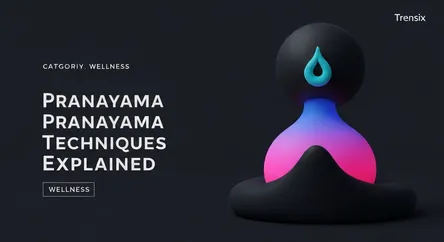Wellness
Pranayama Techniques Explained

Discover pranayama, the ancient yogic practice of breath control. Learn simple techniques to reduce stress, improve focus, and enhance well-being.
What is it?
Pranayama is the ancient yogic practice of focusing on and controlling the breath. The term originates from Sanskrit, where "prana" means life force energy and "ayama" means to regulate or lengthen. It is more than just breathing; it's a method to elevate life energies through specific techniques. These exercises, such as Alternate Nostril Breathing (Nadi Shodhana) and Ocean Breath (Ujjayi), follow specific patterns of inhalation, retention, and exhalation to direct energy within the body. This practice is considered a cornerstone of yoga, designed to harmonize the body and mind.
Why is it trending?
In a world with a growing emphasis on mental wellness, pranayama has gained popularity as an accessible tool for stress management. Often called 'breathwork' in the West, its rise is supported by scientific studies confirming that controlled breathing can calm the nervous system and improve psychological health. Many people are seeking natural, non-pharmaceutical methods to handle daily pressures, improve focus, and enhance their overall well-being. As a result, pranayama is increasingly integrated into yoga, meditation, and corporate wellness programs as a practical method for finding balance.
How does it affect people?
Practicing pranayama has profound effects on physical and mental health. It stimulates the parasympathetic nervous system, triggering a relaxation response that can lower heart rate and blood pressure. This process helps reduce levels of stress hormones, alleviating feelings of anxiety and overwhelm. By increasing the oxygen supply to the brain and body, pranayama can improve lung function, boost energy levels, and enhance mental clarity and concentration. Regular practice leads to better emotional regulation, improved sleep, and a greater sense of inner peace and mindfulness.